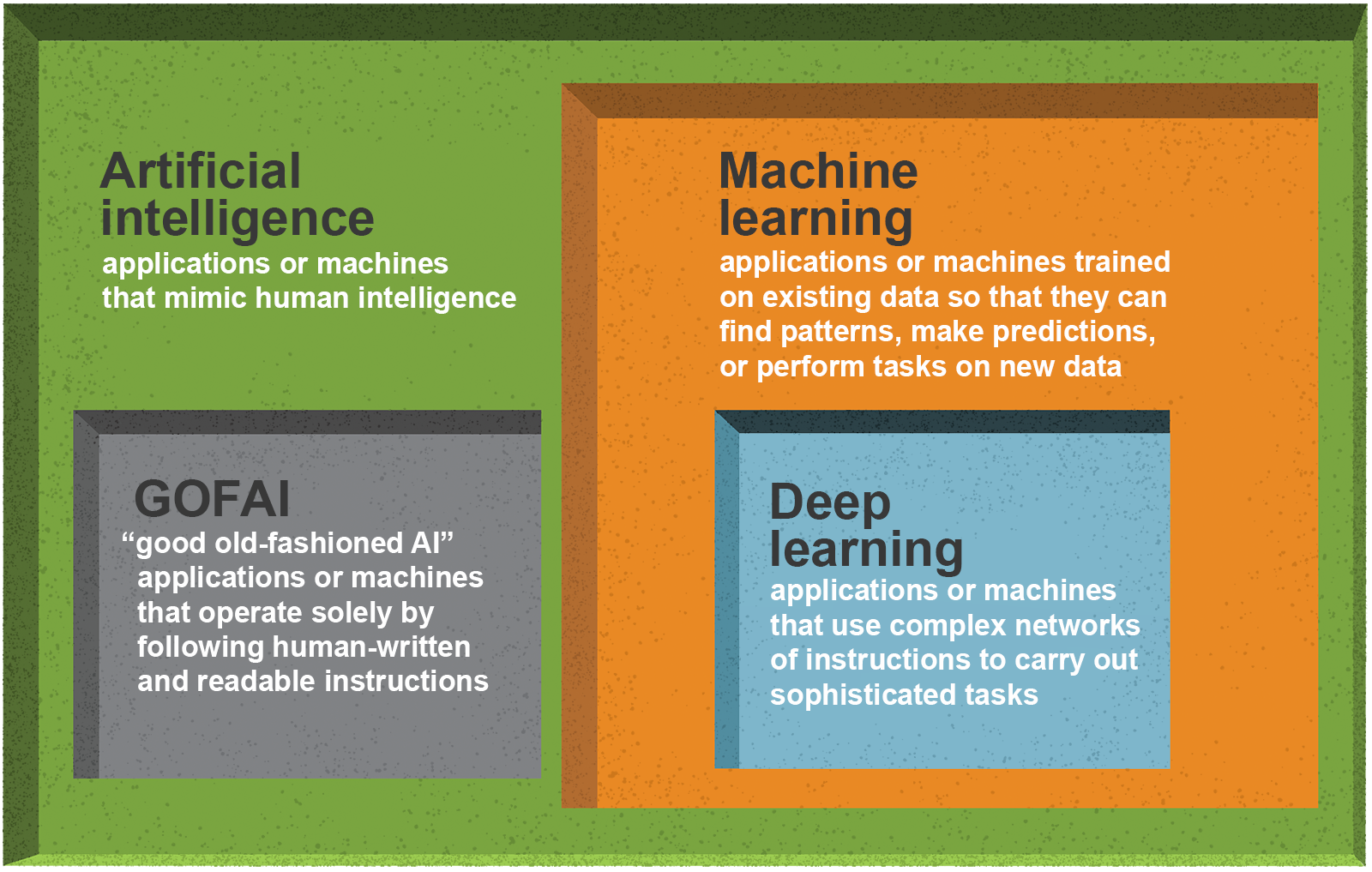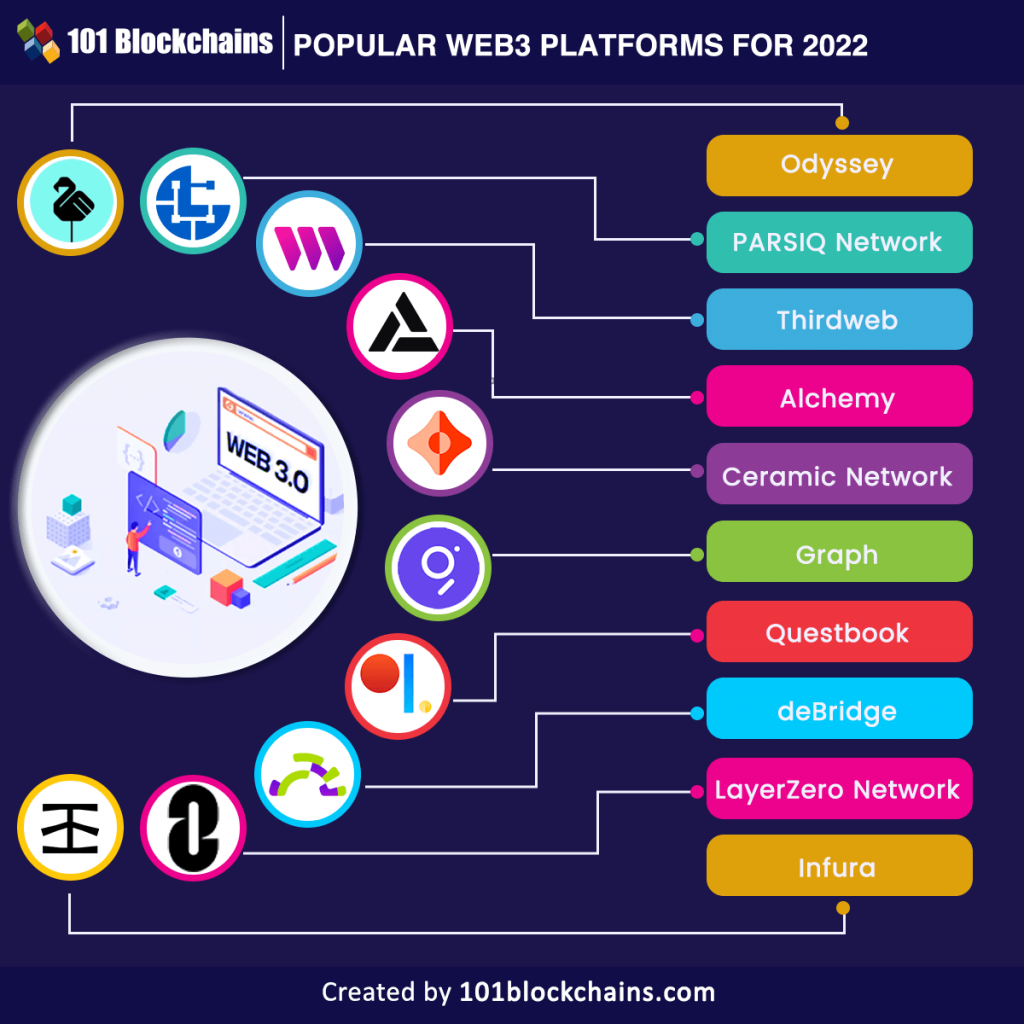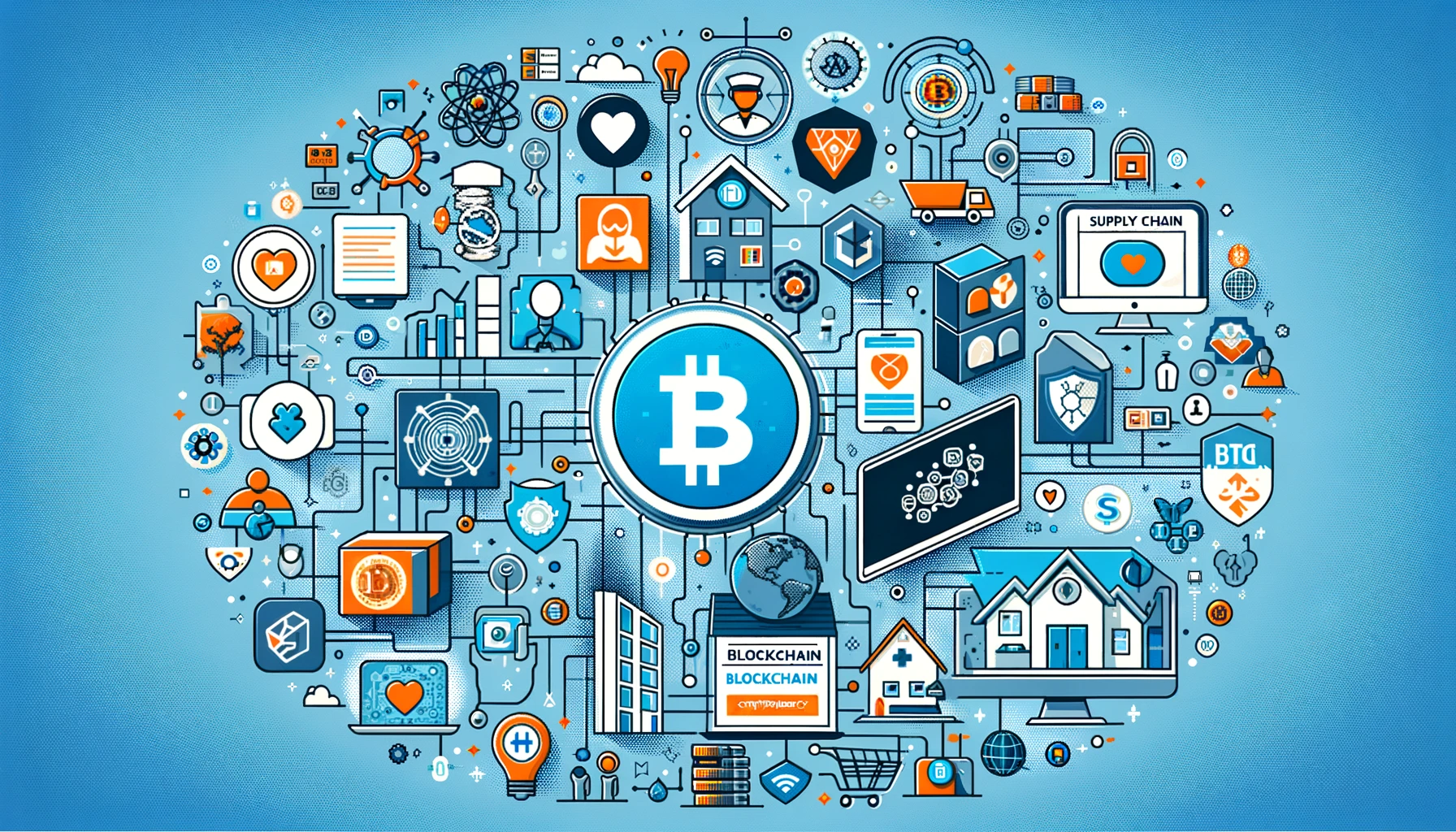
The Essential Guide: Demystifying the Difference Between AI, Machine Learning, and Deep Learning for Beginners
In today’s fast-paced digital world, terms like Artificial Intelligence (AI), Machine Learning (ML), and Deep Learning (DL) are everywhere. They dominate tech news, fuel innovation, and promise to reshape our future. But for many, these terms remain a confusing jumble, often used interchangeably, leading to misunderstanding.
Are they the same thing? Are they completely different? What’s the relationship between them?
Think of it like a set of Russian nesting dolls, where each doll fits perfectly inside a larger one. AI is the largest doll, Machine Learning is the next size down, and Deep Learning is the smallest, innermost doll. This article will break down each concept, clarify their unique roles, and explain how they relate to one another in an easy-to-understand way.
Let’s dive in!
1. The Grand Vision: Artificial Intelligence (AI)
Artificial Intelligence (AI) is the oldest and broadest concept of the three. At its core, AI is about creating machines that can simulate human intelligence. The ultimate goal of AI is to enable machines to perform tasks that typically require human cognitive abilities, such as:
- Problem-solving
- Learning
- Decision-making
- Perception (understanding images, sounds)
- Understanding language
Think of AI as the overarching ambition: building intelligent agents that can reason, learn, and act autonomously to achieve goals.
Key Characteristics of AI:
- Broad Field: Encompasses everything from simple rule-based systems to highly complex neural networks.
- Goal-Oriented: Aims to create intelligent behavior, regardless of the method used.
- Not Always "Learning": Early AI systems were often based on hard-coded rules and logic, not learning from data. For example, a simple "if-then" program that plays tic-tac-toe is a form of AI, even if it doesn’t "learn."
Real-World Examples of AI:
- Self-driving cars: Perceiving surroundings, navigating, making decisions.
- Chess-playing computers: Analyzing moves, planning strategies.
- Robotics: Performing tasks in factories, exploring environments.
- Chatbots and Virtual Assistants (like Siri or Alexa): Understanding and responding to natural language.
- Recommendation Systems: Suggesting movies, products, or music based on preferences.
A Simple Analogy for AI:
Imagine you want to build a machine that can make the perfect cup of coffee. AI is the entire project of making that coffee-making machine intelligent enough to understand your preferences, grind the beans, brew, and even clean up. How it achieves this intelligence (whether by following rigid instructions or learning on its own) falls under the AI umbrella.
2. The Learning Engine: Machine Learning (ML)
Machine Learning (ML) is a subset of AI. It’s a specific approach or technique that allows AI systems to learn from data without being explicitly programmed. Instead of giving a computer detailed, step-by-step instructions for every possible scenario, you give it a large amount of data and an algorithm, and the machine learns to identify patterns, make predictions, or take actions based on that data.
Think of ML as the "learning" part of AI. It’s how many modern AI systems acquire their intelligence.
How Machine Learning Works (Simplified):
- Data Input: You feed the ML model a lot of data (e.g., images of cats and dogs, customer purchasing history, sensor readings).
- Training: The ML algorithm "learns" from this data, identifying relationships and patterns. It builds a "model."
- Prediction/Decision: Once trained, the model can then be given new, unseen data and use what it learned to make predictions or decisions.
Key Characteristics of Machine Learning:
- Data-Driven: Relies heavily on large datasets for training.
- Pattern Recognition: Excels at finding hidden patterns and correlations in data.
- Adaptive: Can improve its performance over time as it’s exposed to more data.
- Algorithms: Uses various algorithms (e.g., linear regression, decision trees, support vector machines) to learn.
Types of Machine Learning (Briefly):
- Supervised Learning: The most common type. The model learns from "labeled" data, meaning the input data comes with the correct answers. (e.g., training a model to identify spam by showing it emails labeled as "spam" or "not spam").
- Unsupervised Learning: The model learns from "unlabeled" data, finding patterns or structures without prior knowledge of the correct output. (e.g., clustering customers into different segments based on their buying behavior).
- Reinforcement Learning: The model learns by trial and error, receiving rewards for desired actions and penalties for undesired ones. (e.g., teaching a robot to walk by rewarding it for balanced movements).
Real-World Examples of Machine Learning:
- Spam Filters: Learning to identify junk email based on past spam examples.
- Recommendation Systems: Suggesting products you might like based on your browsing history and purchases (and those of similar users).
- Fraud Detection: Identifying unusual patterns in financial transactions that might indicate fraud.
- Medical Diagnosis: Assisting doctors by analyzing patient data to suggest possible conditions.
A Simple Analogy for ML:
Going back to our intelligent coffee machine: Machine Learning is like teaching the machine your coffee preferences by letting it observe you. Instead of programming every detail ("if you like lattes, use this much milk"), you let it watch you make coffee, taste different coffees, and rate them. Over time, it learns your ideal coffee without you ever explicitly writing down all the rules.
3. The Brain-Inspired Powerhouse: Deep Learning (DL)
Deep Learning (DL) is a subset of Machine Learning. It’s a specialized type of ML that uses Artificial Neural Networks (ANNs) with many layers (hence "deep") to learn complex patterns from data. These neural networks are loosely inspired by the structure and function of the human brain.
Think of Deep Learning as the most advanced and powerful way to do Machine Learning. It’s what powers many of the cutting-edge AI applications we see today.
How Deep Learning Works (Simplified):
- Neural Networks: DL models are built using layers of interconnected "neurons" (mathematical functions).
- Deep Layers: Unlike traditional ML, Deep Learning models have multiple "hidden" layers between the input and output layers. Each layer learns to recognize different features or levels of abstraction from the data.
- For an image, the first layer might detect edges, the second might combine edges to form shapes, the third might recognize parts of objects, and so on, until the final layer identifies the complete object.
- Feature Learning: A key advantage of DL is its ability to automatically learn relevant "features" from raw data, rather than requiring humans to manually extract them (a process called "feature engineering" in traditional ML).
Key Characteristics of Deep Learning:
- Neural Networks: Relies on ANNs with multiple layers.
- Automatic Feature Extraction: Learns to identify important features directly from raw data.
- Requires Massive Data: Performs best with very large datasets (Big Data).
- Computationally Intensive: Requires significant processing power (often GPUs).
- Exceptional Performance: Achieves state-of-the-art results in tasks like image recognition, natural language processing, and speech recognition.
Real-World Examples of Deep Learning:
- Image Recognition: Identifying objects, people, or scenes in photos (e.g., Facebook’s photo tagging, medical image analysis).
- Natural Language Processing (NLP): Understanding, generating, and translating human language (e.g., Google Translate, ChatGPT, sentiment analysis).
- Speech Recognition: Converting spoken words into text (e.g., voice assistants, transcription services).
- Facial Recognition: Identifying individuals based on their facial features.
- Autonomous Driving: Processing complex visual information from cameras and sensors to navigate.
A Simple Analogy for DL:
Continuing our coffee machine example: Deep Learning is like teaching the machine to be a coffee connoisseur by letting it experience thousands of different coffees. It doesn’t just learn your preferences; it learns the fundamental building blocks of coffee taste, aroma, and texture. It can then apply this deep understanding to create novel coffee experiences or perfectly replicate complex recipes, even ones it’s never explicitly seen before, by breaking them down into their underlying components.
The Relationship Unveiled: AI, ML, and Deep Learning Explained
The most crucial takeaway is their hierarchical relationship:
- AI is the parent field. It’s the grand ambition of creating intelligent machines.
- Machine Learning is a subset of AI. It’s one of the most effective ways to achieve AI, specifically by enabling machines to learn from data.
- Deep Learning is a subset of Machine Learning. It’s a specific, powerful technique within ML that uses multi-layered neural networks to learn complex patterns, often from massive datasets.
Here’s a table summarizing their core differences:
| Feature | Artificial Intelligence (AI) | Machine Learning (ML) | Deep Learning (DL) |
|---|---|---|---|
| Scope | Broadest concept; making machines intelligent. | Subset of AI; enabling machines to learn from data. | Subset of ML; uses multi-layered neural networks. |
| Goal | Simulate human intelligence (reason, learn, perceive, act). | Learn from data to make predictions/decisions without explicit programming. | Learn complex patterns from raw data through deep neural nets. |
| Approach | Can be rule-based, logic-driven, or learning-based. | Uses algorithms to parse data, learn, and make predictions. | Employs deep neural networks for automatic feature learning. |
| Data Needs | Varies; can be minimal or extensive. | Requires significant amounts of data. | Requires very large datasets (Big Data) to perform well. |
| Computational Power | Varies; can be low or high. | Moderate to high. | Very high; often requires GPUs. |
| Feature Engineering | Can be manual or automatic. | Often requires manual feature engineering (human intervention to extract relevant data traits). | Automatic feature extraction (learns features on its own). |
| Complexity | Can range from simple to highly complex. | Moderate to high complexity. | Very high complexity. |
| Examples | Expert systems, rule-based AI, ML, DL. | Spam filters, recommendation engines, fraud detection. | Image recognition, NLP, speech recognition, self-driving cars. |
Why Does This Distinction Matter?
Understanding the difference between AI, ML, and Deep Learning isn’t just academic; it has practical implications:
- Choosing the Right Tool: If you’re building a system, knowing these distinctions helps you select the most appropriate technology. Not every problem needs Deep Learning; sometimes simpler ML or even rule-based AI is sufficient and more efficient.
- Informed Discussions: It allows you to engage in more precise conversations about technology, research, and product capabilities.
- Career Paths: Different roles exist within each of these fields (e.g., AI researcher, ML engineer, Deep Learning specialist), and understanding the scope helps in career planning.
- Cutting Through Hype: The terms are often sensationalized. Knowing the specific definitions helps you discern genuine innovation from marketing buzz.
Conclusion
Artificial Intelligence is the ambitious quest to create machines that think and act like humans. Machine Learning is a powerful methodology within AI that enables systems to learn from data without explicit programming. And Deep Learning is a cutting-edge technique within Machine Learning that utilizes multi-layered neural networks to achieve remarkable performance in complex tasks, especially with vast amounts of data.
While distinct, these three concepts are deeply interconnected and represent the progressive evolution of how we empower machines with intelligence. By understanding their unique roles and relationship, you’re now better equipped to navigate the exciting and rapidly evolving world of artificial intelligence. The future is learning, and these technologies are leading the way!



Post Comment